FAQ- a guide to choosing the right countertops
- Tara Lenney
- Jan 26, 2023
- 7 min read
Updated: Mar 22, 2023
⠀⠀⠀ Which of the following apply to you?
love to cook
almost never cook
have kids
drink wine
host parties
hate cleaning
want everything in your life to be low maintenance
are OK with high maintenance if it's gorgeous
If any of these sound like you, then come in real close. If you are thinking of any sort of kitchen or bathroom upgrade, you'll want to keep reading our guide to choosing the right countertops for you. We're sharing our favorites and how to know whether they're right for your application.
One thing to note first that applies to all slabs - the finish. There are generally 3 options:
Polished - most common. Shiny.
Honed - most yummy. Less common. Has some of the shine knocked off. Feels amazing and looks a bit more high-end
Leathered - not offered on all slabs. Has a more uneven, leather-like texture. Can be more rustic or casual.
Terminology covered. Let's dive in.

ENGINEERED QUARTZ
Friends, if you are looking for a beautiful and low maintenance countertop, quartz countertops are the answer to all of your problems. They are an engineered product made natural quartz (that comes from the ground) that is ground up and bound with resins (binders) that hold it all together and give it massive durability. The % of natural quartz content varies by brand and by pattern. Here are the HUGE benefits:
Resists staining. I've gotten sharpie out of mine with a Magic Eraser. You can get strawberries out of it. Wine - no match. Coffee - fuhgettaboutit.
Resists scratching. Quartz is one of the hardest minerals we've got, so much like granite, it will resist scratches.
Low maintenance. You don't have to re-seal it or baby it. For daily cleaning I use Mrs. Meyers all purpose spray, and for a deeper clean I'll use hot water with a drop of dish soap.
Looks gorgeous. If you like the marble look but do not want to have to baby your counters, this is for you. Whether you like a low amount of veining or something really striking, there are all sorts of pattern options available.
Resists etching. Many natural stones, particularly marble, will etch when they comes into contact with acids (think lemon juice and marinara sauce) and the only way to fix it is refinishing the counters - $$$. It also makes instagram shots of your homemade bread look amazing.
Slab size. Most of the quartz manufacturers make jumbo slabs, so if you have a 10' kitchen island you can get away without a seam!

These are some of our favorite brands that we use over and over. It's by no means and exhaustive list, but these are our go-to companies.
Cosentino
Cambria
Silestone
Caesarstone
MSI
A little internet search will tell you where you can see them and buy them in your area. And we HIGHLY recommend anytime you buy countertops to look at a full slab in person. An online photo or even a small sample will not do it justice, especially when you're thinking about a marble-look with a lot of movement.
Cost wise, engineered quartz is definitely more than granite, but is often less than natural marble or quartzite. And yes, quartzite sounds a LOT like quartz and can be confusing, but quartzite is a natural stone that comes out of the ground (just like a granite) and is not the same as engineered quartz.
By the way, NEVER use it outside. It can't stand up to the UV rays.

MARBLE
Ain't nothing like the real thing, baby. While engineered quartz wins the prize of the beauty + low maintenance contest, if we're being honest, it doesn't hold a candle to the real deal.
There is something so buttery and delicious about actual marble. It feels luxurious when you touch it. It has a depth that the engineered stuff just can't touch. But that beauty does come with a cost.

And that cost is $$$$ and durability.
Here's the thing. Marble is actually durable in a lot of ways. Ancient Rome and Greece are covered with the stuff (which makes it an option for outdoor use). It's on every dadgum countertop and table in France. But you have to be okay with the material weathering over time.
It will scratch.
It will stain.
It will etch.
If you are the kind of person who is going to lose their mind if you spend $10K on countertops and 3 days later you get a red wine stain, this is not the material for you.
HOWEVER. Bathrooms tend to be far less stain-prone than kitchens. Many times we'll install an engineered quartz in a client's kitchen, but use a natural marble in their bathrooms. We did that at our last house and the marble in our bathroom held up for 7 years without issue.

You can help the situation by having it sealed when installed and resealing it every couple of years. The thing is, though, most people don't. You forget, you mean to get around to it, but you don't. I never did.
Just like with engineered quartz, and honestly even moreso, you need to pick out your slabs in person. DO NOT rely on a 3" sample because it will not be representative of the end result. Visit a slab yard and hand-pick your slabs.

Cost-wise there is a big range with marble. More common marbles, like Carrara (above; the kind you see all the time with the white background and soft gray veining) is everywhere and therefore not as expensive. The more exotic ones can become extremely expensive. It's always advisable to pick out a few slabs that you like and get pricing on them, since the range is huge.

QUARTZITE
Quartzite is a natural stone, like marble, and is a phenomenal option because it is more durable than marble. It resists the scratching, staining, and etching much like a granite would. The beauty of the natural stone means that it's going to have more visual depth than an engineered quartz, but there are a few things to consider.
The color tends to not be as white as marble, so if you're looking for a marble dupe, this may not fit the bill. If you like a bit more color and variation, though, this may be a great fit. Above, it has a warm toned marble look. In the image below it resembles a black marble.
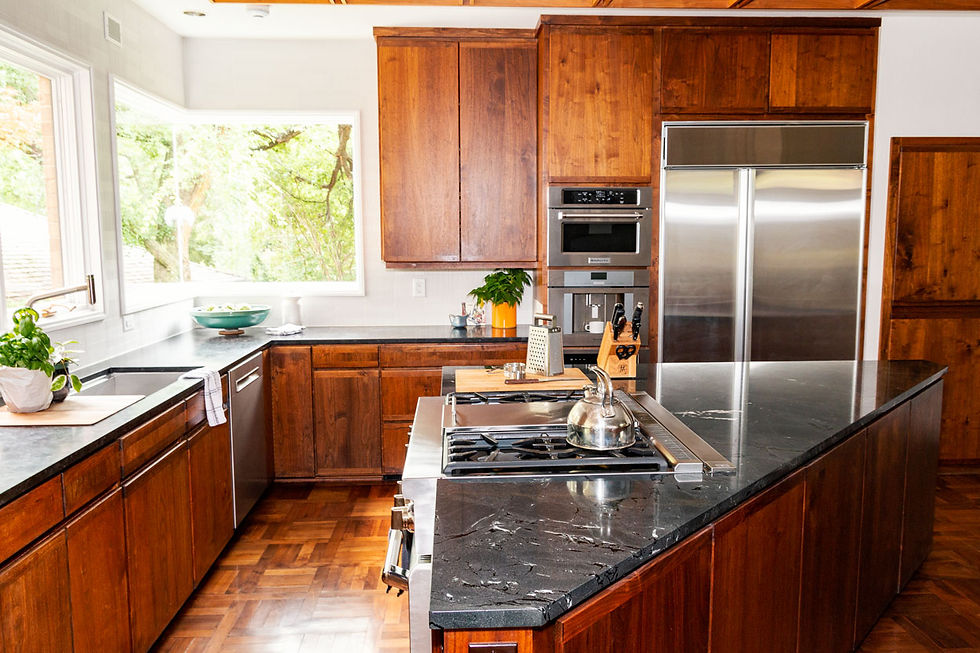
The cost tends to be on the higher end. It will very likely run you more than an engineered quartz or a more basic marble. If you want the natural beauty, you'll have to shell out for it.
Because it's a natural stone, you will need to seal it periodically.
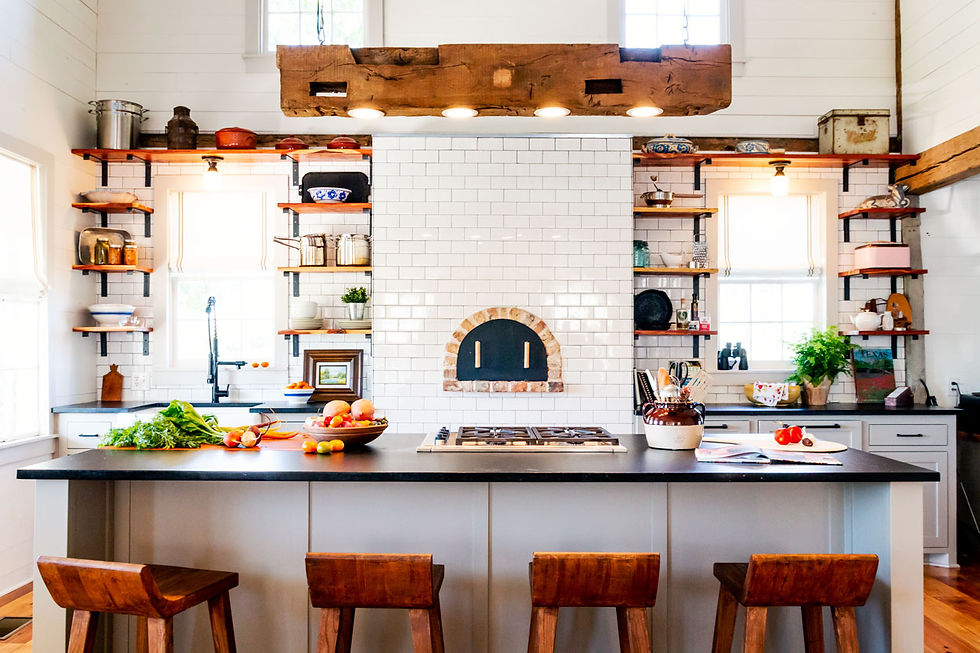
SOAPSTONE
I have a soft spot in my heart for soapstone (that's a pun but you just don't know it yet).
Soapstone is a natural stone and ranges from black to deep green in color. It is EXTREMELY durable in a lot of ways. This is what your high school chemistry lab counters were made from. It resists staining and etching and holds up well to harsh chemicals.
But there is a major downside. It is SOFT.
Obviously not pillow-soft, but this material isn't nearly as hard as most countertops. You can scratch it pretty easily with common kitchen tools. It also requires fairly regular oiling to keep it looking great. Easily once a year, typically more.
A la marble, if you're okay with some imperfections here and there, it is truly a gorgeous option. If your vibe is a little more relaxed, casual, or European, it's a great choice.
It also works well outdoors, but do know that if it's in direct sunlight in the Texas summer it will be HOT to the touch.
ENGINEERED QUARTZ - BUT MAKE IT SOAPSTONE
I know we already talked about Engineered Quartz, but I feel like this deserves another mention. Most people think of Engineered Quartz as an alternative to marble, which it is, but did you know they also do other stones very well - like Soapstone.

This kitchen is on the same property as the true Soapstone kitchen you saw a minute ago. While our clients love the natural Soapstone, on this next building on the property we decided to go with a lower maintenance option.
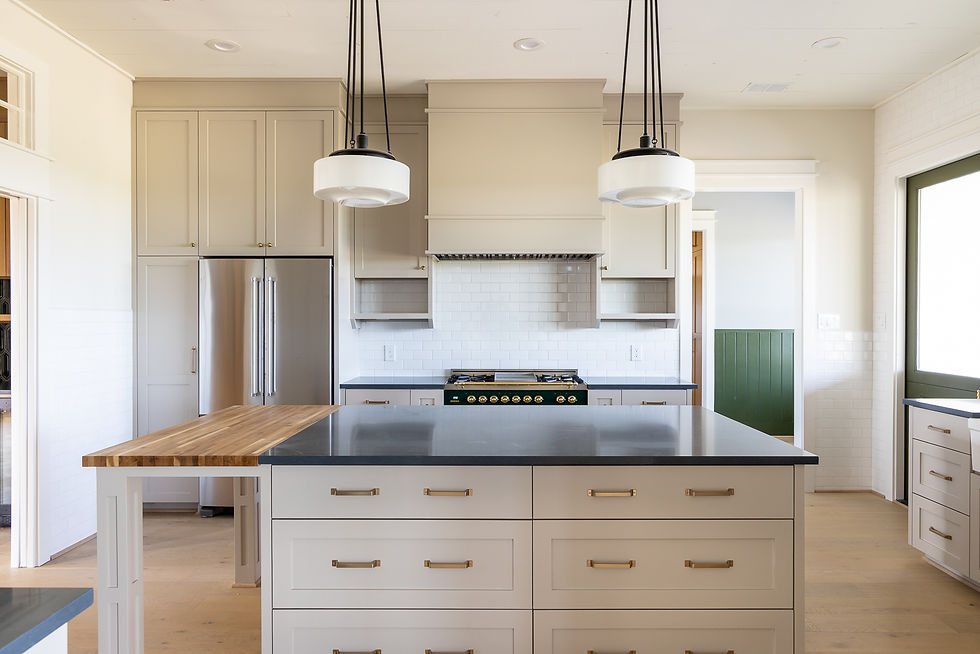
Lots of the beauty of natural soapstone, but none of the maintenance. You can refer back to the beginning of the post for a refresher about everything we love about Engineered Quartz.

LEATHERED GRANITE
If you like the idea of a "soft" black look like Soapstone, want a natural stone, but don't want the actual softness, leathered Granite is a great option. Pictured here on the left and rear counters, we paired it in this kitchen with a bolder (and pricier) Quartzite on the island.
We've all seen granite, so I don't feel like I have to go into crazy detail here. Granite Countertops has been the battle cry of real estate listings for the last 20 years.
Granite is durable. It's hard, resists staining and etching, and is pretty low-maintenance. It tends to be very speckled and shiny, sometimes even sparkly.
That's why getting an all-black granite, like an Absolute Black or Brown Antique (pictured above, not remotely brown, complete misnomer), is great, because it modernizes that Y2K granite look.
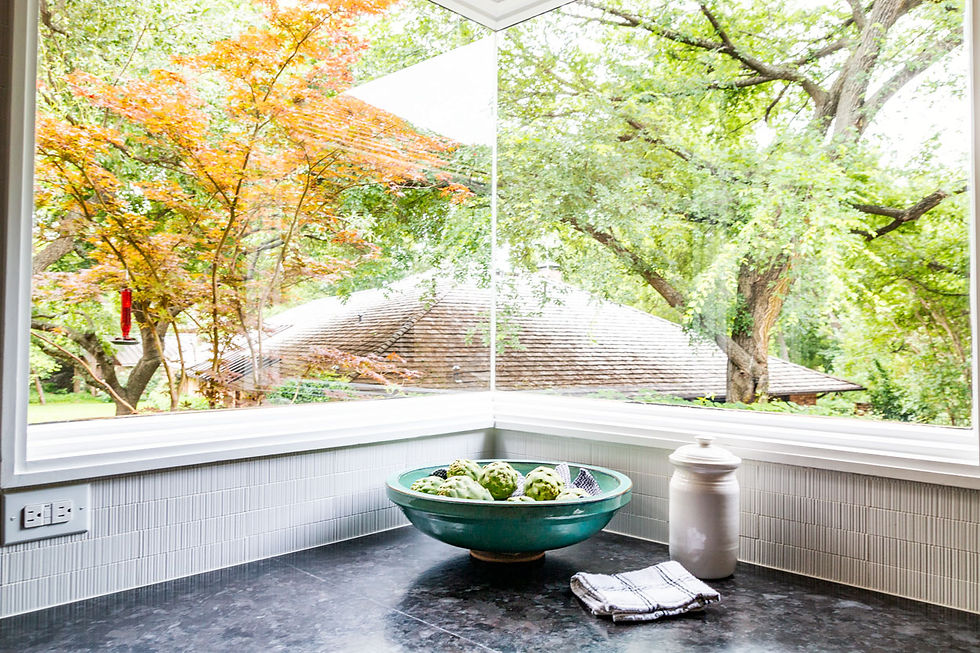
The "Leathered" part refers to the finish. Leathering is somewhat bumpy, but not rough. Think of it like an actual piece of leather. It's not totally flat or smooth.
You can use granite outside. We've installed it on outdoor kitchens, but have gotten mixed feedback from our clients as to how they like it in the long term. Some love it, some find it difficult to keep clean.

BUTCHERBLOCK
Taking a small detour away from the stone and stone-like options to talk about Butcherblock. Made of bits of solid wood that are pressed and glued together, butcherblock is a gorgeous option.
We don't recommend installing this anywhere with a sink. We've tried it before and used marine-grade varnish (like what they put on boats) and it just didn't hold up the way we wanted. It's a great option for a kitchen island or counter where you don't have any sinks. You can treat it like a cutting board and cut directly on it. You will want to keep it sealed and oiled.
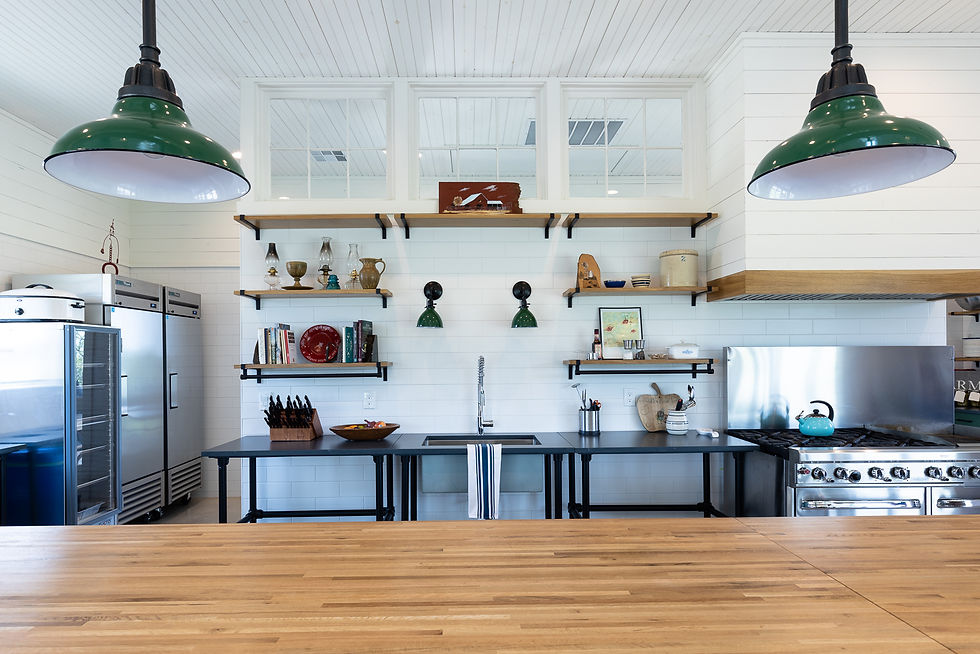
We've also integrated areas of butcherblock on counters right up next to marble. The trick here is, though, that they are not the same thickness. Your contractor will have to plane the wood down to make it flush with your adjacent counters.
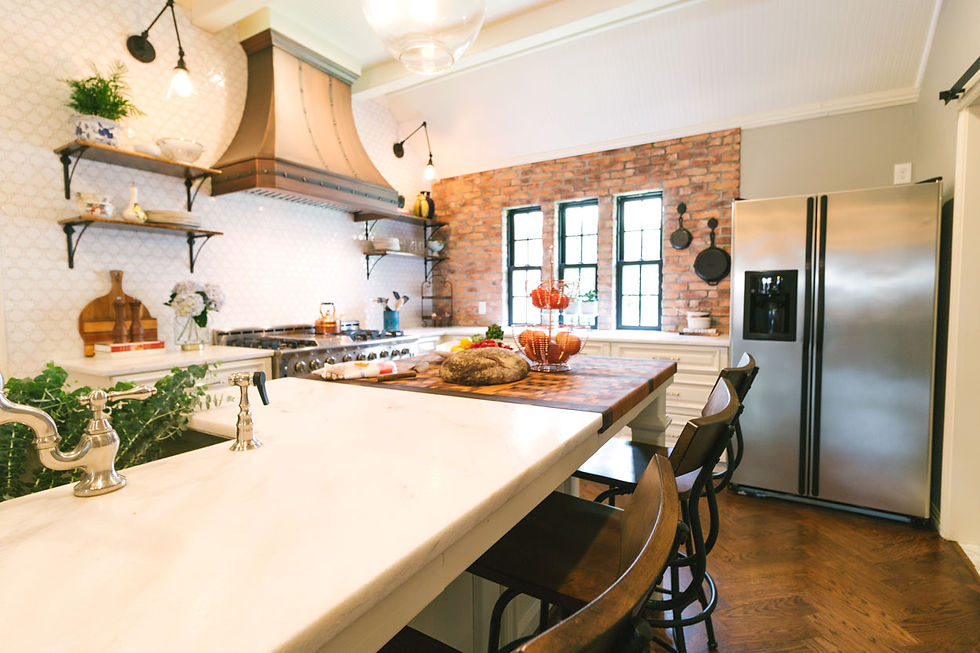
There you have it. A roundup of our favorite countertop options! If you have questions feel free to drop them in the comments and we'll be happy to answer them!



Kaiser OTC benefits provide members with discounts on over-the-counter medications, vitamins, and health essentials, promoting better health management and cost-effective wellness solutions.
Obituaries near me help you find recent death notices, providing information about funeral services, memorials, and tributes for loved ones in your area.
is traveluro legit? Many users have had mixed experiences with the platform, so it's important to read reviews and verify deals before booking.
This is a fantastic and informative guide! I appreciate how you break down the pros and cons of each countertop material, making it easier for homeowners to choose what best fits their lifestyle and aesthetic preferences. The tips on maintenance and selection are especially helpful. I love the emphasis on seeing slabs in person to truly understand their beauty—great advice! Looking forward to more insights like this!